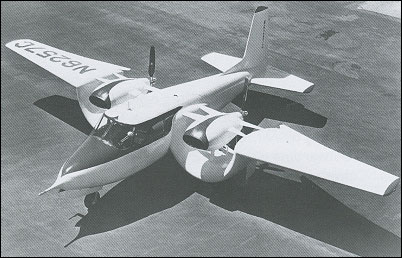|
| There is no text information for this aircraft at the moment.
| Klaatu83, e-mail, 01.08.2013 15:06 This airplane looks weird but it actually few extremely well. Willard Custer devised his unique "channel wing" arrangement in the early 1930s and worked on it for decades, constructing several successful flying prototypes. He never gave up trying to sell the idea to the mainstream aeronautical industry. This, his last and most advanced twin-engine prototype, demonstrated a very good STOL performance without the aid of slots, flaps or any other additional high-lift features, and had a very wide range between maximum speed and stall speed. Perhaps the only disadvantage was the additional weight and drag produced by the channel wing structure. Although Custer never did succeed in selling the aviation industry on this design there is no question that it worked and who knows but that it may be resurrected some day. reply | | Terrence I. Murphy, e-mail, 17.02.2012 16:35 The imagination and ingennuity of aircraft designers never ceases to amaze me.
The advantage of this arrangement is that the propeller produces a high-speed flow, known as the propeller slipstream, through the channel generating greater lift. Custer, who was actually a relative of the ill-fated Gen. George Custer, hoped to exploit the phenomenon to develop short takeoff and landing (STOL) aircraft. reply | | A.T Hughes, 27.05.2010 15:57 It's callked a channel wing, the idea being to get more lift by the engine placement and wing arrangement an example of this is at the MAAM in Reading Pennsylvania reply | | JSilver, 14.04.2009 03:05 You can find much more information about it at www.custerchannelwing.com / reply | |
| | Aero-Fox, 20.03.2008 05:42 That is the single most bizarre wing arangement I have yet seen. reply |
|
Do you have any comments?
|
| |









